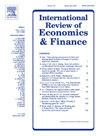多资产市场交易模式同步
IF 5.6
2区 经济学
Q1 BUSINESS, FINANCE
引用次数: 0
摘要
本文提出了一个市场微观结构模型来解释序贯拍卖中交易者的策略行为与不对称市场关闭之间的相互作用。由于流动性交易的积累,当日交易量和收益波动的峰值同时出现在所有交易资产中,因为对于可以选择何时交易的自由流动性交易者来说,当(i)交易的资产更多,(ii)任何资产的流动性交易规模高时,成本较低。交易量和收益波动呈u型,且收益相关性增加,表明流动性交易者主要推动前期交易加剧,而后者归因于知情交易者。我们的研究结果与文献中报道的同一市场和不同市场中观察到的资产风格化事实一致。本文章由计算机程序翻译,如有差异,请以英文原文为准。
Trading pattern synchronization in multi-asset market
This paper presents a market microstructure model to explain how traders’ strategic behavior interacts with asymmetric market closures in sequential auctions. The spikes in intraday trading volume and return volatility emerge simultaneously in all traded assets due to the accumulation of liquidity trading in that period because, for discretionary liquidity traders who can choose when to trade, it is less costly when (i) more assets are traded and (ii) the magnitude of liquidity trading in any asset is high. The U-shaped trading volume and return volatility, with increasing return correlation, suggest that liquidity traders primarily drive the intensified trading in the earlier period, while the latter is attributed to informed traders. Our findings align with the observed stylized facts in assets within the same market and across different markets, as reported in the literature.
求助全文
通过发布文献求助,成功后即可免费获取论文全文。
去求助
来源期刊
CiteScore
7.30
自引率
2.20%
发文量
253
期刊介绍:
The International Review of Economics & Finance (IREF) is a scholarly journal devoted to the publication of high quality theoretical and empirical articles in all areas of international economics, macroeconomics and financial economics. Contributions that facilitate the communications between the real and the financial sectors of the economy are of particular interest.

 求助内容:
求助内容: 应助结果提醒方式:
应助结果提醒方式:


